| Artists Database | DJs & Top10 | Interview | Booking |
|---|
December 5 , 2025
| Interview with Son Kite |
|---|
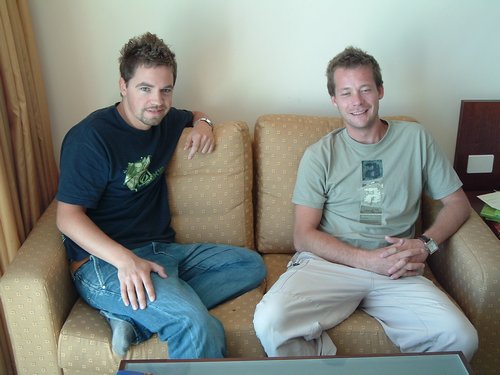 First, give us a little history lesson. Who are you? What do you do? Seb: I think Marcus is the one that has been into electronic music scene the longest, because he started to DJ in the early 90s. At that time I was playing violin in classical music orchestras and pop bands, and I didnít know much about electronic music at all. Marcus and our friend Peter were doing a lot of parties in the south of Sweden. So, finally I went to one of these parties and I met them and got into the electronic scene very very fast. It was 95 or 96. Why did you choose this kind of music? Is it trance music at all? Marcus: Then it wasnít trance music. We just wanted to make music. I used to play techno, minimal techno and acid. I never played trance at all. So, we just wanted to make techno music, try it out... We had big influences from Massimo Vivona and minimal progressive house. Thatís how we started out. Seb: Actually when I started I knew nothing about any particular styles, because I started to make electronic music in the chillout scene, and at that time Marcus was not making music with me. I had another friend called Christian who I made chillout music with. And then, since Marcus was one of my best friends, he tried to push us to make dance music because he wanted fresh music to play. One day we tried to make a track. It was fun to do and a really bad track but I think that Marcus got really eager to try to make some music, so he asked us if he could join and we became three. Then it became more serious. Marcus was the one who knew about the styles, about the music, about how to DJ and things like that, and I just tried to make music. But of course, in the beginning you listen to the music that you really like a lot and you try to figure out how do they do it: create a track that people want to dance to. The year was 97. Marcus and I were really eager to go somewhere. We really wanted to be able to create the music we wanted, so we worked non stop all the time, and the third guy just couldnít work that much, so he said: ďOK, you can be two and Iíll do something else.Ē And then it was more like Massimo Vivona, not techno- pure techno- and not psychedelic trance, but earlier trance. It was like techno with trance influences. Small harmonies, small sounds, but not the typical trance of 97 with Astral Projection and the big psychedelic bands. At that time we didnít listen to this music at all. Marcus: Actually, disliked it, I think. Youíve released 3 albums, and probably dozen of other tracks. Donít you ever run out of ideas? 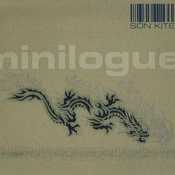
Seb: Never. Quite the opposite. In the beginning when we made music, you only made music because you didnít play, nobody knew about you, you didnít answer any e-mails because no one sent you any e-mails, you didnít release any music, so the only thing you did was making music and then you had time for trying to put out ideas you have. But now when you have gigs every weekend, you get millions of e-mails every day, you have to take care of the promotion, you do your bookings, you book flight tickets, you sign the tracks to record labels (which means reading the contracts), etc. So you have very little time to make music, and we donít have time at all to do everything we want to. 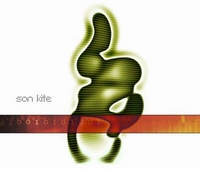
Marcus: Weíve been listening to music of all kinds. Not only techno or trance, everything. So we get inspired of whatever... For example, I can get inspired of a track thatís on MTV and maybe Iíd like to do something like that. Our influences are very wide in musical spectra so I donít think weíll ever run out of ideas. Seb: Itís rather that you almost get a big frustration, because you have so many ideas on your back that you really want to do but you canít remember them all. You just have to accept the fact that ďwhen I get more time Iíll take the idea that comes that day.Ē 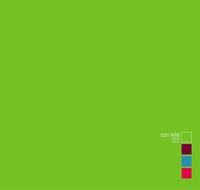
I recognize a progression between your 3 albums. Did you notice that too? Seb: I donít think we have a specific idea for the time. The first album is quite typical because thatís the album we did when we only made music. We did nothing else. We didnít have so much influences coming from parties, etc., because we were sitting in the studio, focused on what we wanted to do at that point. So that was really a pure thing that came out of us. I think itís more of a simple story because the tracks are more similar to each other. The second album was when we really came out and started playing every weekend. Marcus: We got influenced from parties a lot. Seb: Yeah. You get to all the big trance parties and all the big trance DJs and youíre like ďShit! Is this the music that everyone is playing?!Ē. Without knowing you can get influences from music that you donít even like. If you hear it a lot, you automatically try to put things like that in your music. The second album which I like a lot (not all the tracks anymore) was not as much "us" as the first album. It was more influenced by things that we donít like so much or liked for a very short time. After that album it took us three years until the third one. In three years, if youíre creative and want to do something new, you change a lot. Both in what youíre listening to and your abilities in the studio, what you can do and of course, what you want to do. But we didnít have any specific thing like: "we want to do an album like this". Marcus: The only thing we wanted to do is a varied album. We didnít want to have an album with the same tracks all through. We wanted, for example, a slow track, a progressive track and a faster track. We really wanted to have it varied. Seb: We tried getting influences from other electronic dance styles like electro, that we like very much, techno, trance and house. We tried to melt it together but still keep the story, to be able to give the listener a flow. Not a ďstraightĒ flow like this but a little more sliding around. 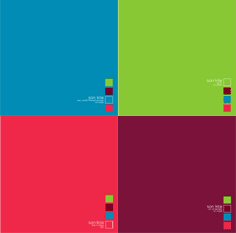
So now youíve released a new album and itís a part of a big concept, the colors concept.. What is the colors concept? Seb: Thatís also something that has really grown during the making of the album. When we started making the album we didnít think about a concept. Slowly we felt that ďShit. We want to do something bigger this time, more than just an albumĒ. Then, again, slowly, we had all those small ideas that today are the different pieces of the concept. Marcus: We really wanted to do something that was different, because itís so hard to do something that stands out from the rest of the album releases. Especially today, when everyone is downloading and everyone is copying the CDs, you want to make something special so people would really want to buy the whole thing- not only download it. Seb: Show people that we really care about the music, that we really want to do something special. If we respect our listeners and the people who can buy our albums, we hope that they will respect us and try to give us something back for the work that weíre putting to it. The concept is four releases: the album, two singles and a DVD. We tried to make the whole concept fit together music-wise and graphic-wise. Itís like a line that puts them together. Still, we tried to give different perspectives of our music in our different releases. The album is our pure, own, little story, the singles are other peopleís view on our story, and the DVD is the multimedia version of Son Kite live, so itís our music but also with other people who create our music in the visual perspective. 
Why release a DVD? Marcus: Actually we wanted to do it for a long time, because we always try to have a special live show when weíre playing, so we wanted to show and give the live feeling from Son Kite to the masses, not only on the party. If you go to a party you can hear us, but we wanted to give it out to people, so you can feel the live feeling at your home, listening to it or on television screen. We tried to do it on 2001 when there was too much money involved. Itís was too expensive to make a DVD. Seb: At that time we didnít have too much income. Now we put all our savings in this DVD so weíre bankrupt. You have to run a camera, a team, people who edit the DVD, music videos, itís extremely expensive if you compare it to making an album. But also, in all levels, we wanted to make something new, like... You want to do something new with your music, you want to do something new with your live act, and also the possibility that you can make a DVD makes you want to make a DVD. You say ďOK, what is this? What can we do with this media?Ē and I think it came quite easy that ďOK, we have to try to make a DVDĒ Marcus: Weíre always striving for something new. We donít wanna be stuck in the same style or do the same thing over and over again, so I think it was a natural progression to do it. What does that DVD contain? Seb: The main thing on the DVD is a one and a half hour live concert that we made on Halloween in last October in Tokyo. We had a film team of five cameras and also two VJs from Sweden who made special VJ material for our live show. On the DVD there are two angles, so you can choose between watching us or just the VJ material. The film material is edited by David Nord, who is a quite famous film editor from Sweden. Also there are music videos and a lot of "on the road" and backstage filming... much more amateur but a lot of fun! 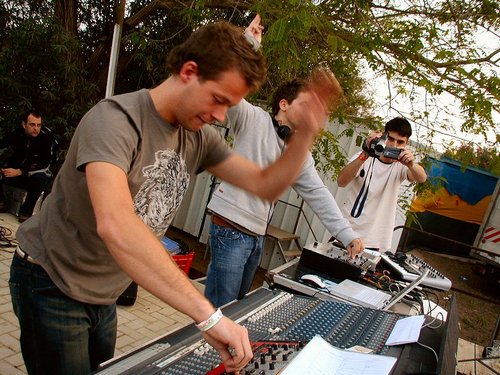
What is your live show? What can we expect from it? Seb: For me, I think there are three really important facts or points for a live act and itís presence, communication and show. The presence is to make people and to make yourself do something different. You need to leave everything else. When youíre playing at a club, you have to be able to only think about that youíre playing and youíre here and youíre playing for the people on the dance floor. You need to be able to show that youíre doing something, because if youíre not doing so much and just stand up doing nothing, itís very hard to get into your own music. You start thinking about: ďoh, someone is dancing a little bit thereĒ, what did I do yesterday, what will I do tomorrow, when is the flight, etc. Then you canít really get into it. When youíre really playing, like us building the tracks live with the big mixer, you have to focus on that. You have to see the people and you really get into it, and I think itís much easier for the people on the dance floor to get into the music if they see that there are two guys on stage who are totally focused on the thing they are doing. They get inspired by this feeling on stage. When Iím dancing and I want to have a special experience in the dance. When I start to think about what Iím going to do tomorrow I lose that directly. You need to feel the presence here and now. 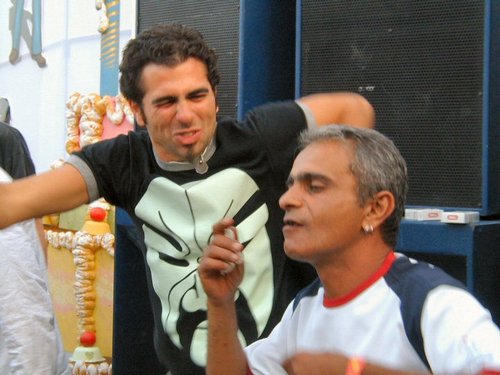
Thatís the feeling of trance. Seb: Yeah, exactly. Marcus: because, on the dance floor, if the people are gonna get into trance, weíre gonna get into trance, because the way we play live... itís more alive. Technically, we have 16 channels so we can do the arrangements live, and this way we can read the audience and, for example, have a breakdown in the middle of the track where we can see that itís the right time for a breakdown. 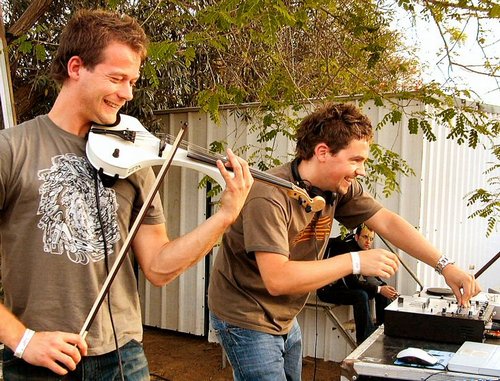
Seb: This is the communication part. When you can do something, the way youíre playing can be influenced, you can be influenced on stage by the people, like Marcus said. You feel the people, if they really like when weíre doing tricky things with the sounds. The reaction from the dance floor actually interferes with you. You can feel it in the music that we are playing. Thatís the communication: a circle between us and the dance floor. When people feel that they also get much more into the music because itís not just a DJ that thinks ďI play the tracks I like, I donít care about what the people thinkĒ. The people can actually interfere with the music itself, but itís still Son Kite all the time. The third thing is the show. I think that if itís a live show people want to see something different. If itís one guy with a laptop standing, not moving, just looking at the laptop, then itís not a show, itís like a DJ, itís not different. We try to add elements that make people see that weíre playing live, visually. Things like the violin, and we're really trying to show that weíre really turning the knobs on the mixer: here comes the sound, here weíre turning a knob and there is no sound. I think people get really happy when they see: ďoh, they are doing it on stage, itís not a fake, itís trueĒ. There comes the show. You can do it in a million ways, you can play the drums like some acts do, the guitars, something different that makes people see that itís a live show. It can be anything. You can have big hats for example, you know, something to make it a little bit fun, or something thatís happening a little bit different somehow. A little spice on the end. These three elements make a good live show. What are the responses so far? Marcus: Super good. Seb: Super super good. Do you think feedback is important? Seb: There are so many different ways of feedback, and I think itís a big matter of how you are as a person. When weíve been sitting in the studio for one year, and no one has heard the music, we were really eager to hear what people think. Of course if people would dislike it a lot I would still like it, because I like it. Iím not changing my mind about the music because of other peopleís opinion, but still itís a little give back on all the time and everything youíve done to hear that ďOK, other people like this as wellĒ, and of course you get very happy and you get energy from it. Marcus: The best place to get that is the Isratrance forum. Thatís the absolute best. Itís super good. Especially for us. Weíre always there, online, once or twice a day, checking if someone put up a new review or whatever. Itís really good. Itís also good for the audience to read about it, to get to know before they buy the release and see what other people think about it. Seb: There are also other kinds of feedback. For example, the feedback that comes from other musicians that are not posting in forums, not on magazines, but small discussions you have with people about production, about music and everything. I think itís always important to be open for the feedback that other people have, because sometimes when youíre into one thing you can be really narrow minded, and when someone says that ďI think you used too much guitarsĒ, for example (weíre not using guitars but...) and you say ďno, the guitars are really goodĒ, you donít want to listen, and itís really important to listen to what other people say, because when youíre doing your own thing itís really hard to be objective, you get really subjective and you canít see it in a fresh view, and other people when they listen to a track the first time, itís easier for them to hear if you lost the track somewhere, so try to be open and listen to other people. Marcus: We always get feedback. Back home, when weíre making a track in the studio we always have friends coming down the studio and we invite them to listen to a track and say what they think and whatís good and whatís bad. Itís very important. Seb: You donít need to follow what people say, but itís important to listen and try to understand why they think like that. Why they didnít like this and why do we like it. Marcus: Itís good to invite musicians and people that donít make music as well, so sometimes we invite the Ticon boys to ask them what they think and itís very good production-wise. Sometimes itís our girlfriends who're not into the production at all, they just listen to the music. 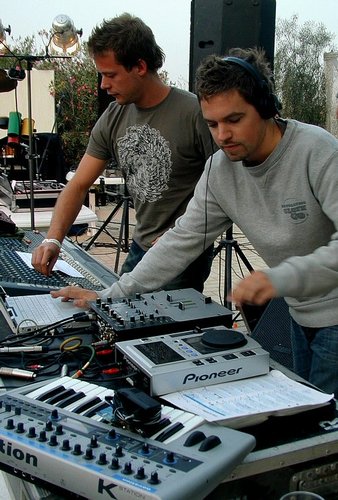
Have you ever changed a track because of feedback? Marcus: in the studio when weíre making it of course, sometimes... Seb: Sometimes itís so hard to get a feedback when youíre in a track because you think you have a mission, or you have something you want to tell, and when someone gives negative feedback itís more like ďOK, they didnít understand our pointĒ, we have to make it more clear and maybe you try to do your idea more obvious to make them understand what you wanted to tell them. More often, when you get a feedback on a track, maybe you take it in, but it takes a few weeks and you have this little lesson for the next track. Sometimes, for me, at least, itís quite hard to use the feedback at the time youíre doing it. Itís more for your own development for the future. Youíre taking feedback from all directions and melt it together with yourself and something new is coming in the end. What is the function of vocal samples in your tracks? Seb: Actually we were so much against vocal samples in the beginning. Marcus: Yeah, we hated it. Seb: At that time we were really strict about what we liked and disliked. We had this thin little line that was good in one record a year. Voices were, at that time, disturbing us in getting our own opinion or feeling of the music because a voice can be very distinctive emotionally. Marcus: Thus telling you what to think or feel. Seb: Yeah. And at that time I really disliked that. I wanted everyone to listen to music to be creative and create our own story, etc. Marcus: The way we use the radio sample is more psychedelic because itís not telling you what to think or feel, you can imagine whatever you want to with the sample, so that's just an extra spice on top of the track, something to get more into trance. Seb: In Son Kiteís music, we use it more as a sound than typical lyrics. Like an instrument. Thereís only one track in the album (Let Us Be) that has a full lyrics line, but itís so hard to understand what the voice is saying, because it's so distorted and we cut it and, you know... I donít know if people can hear what itís telling. We try to use the sound, not to deliver a sentence or a message to people like ďgod is out thereĒ or ďthe nature is goodĒ or something but more like... going trough the sound and the feeling the sound creates. For example, the voice on Let Us Be is really distorted, itís really dirty, itís crashed, but in the same time thereís a really beautiful melody line. This distraction, this dynamic between the crashed voice and the beautiful melody line is really nice for me, because you get both things at the same time. Marcus: And also, of course, we want to explore new stuff and vocals are something we never explored before, not too much. Have you ever thought about making a full song with vocals? Marcus: Weíve done already, with Minilogue, our progressive project. Seb: In the future it will be more like that also. We try to do everything, and we have our whole life to do whatever we want, and maybe it will be symphony orchestra or pop bands or whatever. 
On Air was remixed by 5 different artists. What makes a good remix in your opinion? Marcus: If you can keep the ideas or the soul from the original but still have a new sound to it I think itís a good remix. Of course the track has to be good as well. In some remixes, you canít hear itís a remix because it sounds like a new track. I donít like it. It has to have the main melody or the main idea from the original. Otherwise I donít like it, I donít think itís good to remix otherwise. Seb: I think the most important thing is to recognize that itís a remix. It doesnít matter so much in which way you recognize it. If itís the vocal sample or itís a melody or something you have to recognize. People should feel it on the dance floor, ďAh, itís that track but it doesnít sound like that trackĒ. The remixes put new emotions in a track. Thatís what we wanted to do with On Air, because all the remixers have really different feelings, and all the producers behind the remixes come from different styles. Deedrah from the full on, Lemon 8 from the pure progressive house, NDSA also from the house scene, Midival Pundtiz from the ethno chillout and Future/Past from electro breaks. You have both Son Kite and Minilogue. Whatís the difference? Marcus: Itís the style. Minilogue is the more progressive house style and Son Kite is the more trancy, progressive trance. I donít know how to define Son Kite actually. Itís always in between. Weíre touching progressive house a little bit and also trance, so I donít know. Seb: From the beginning, when we started Minilogue, we were still a little bit afraid to do what we wanted to do. Well, not exactly. We just thought that Son Kite is a trance thing, our way of trance. So, if we shall make house we have to make something new. Then we started Minilogue. As time goes I feel that we can be quite secure making dance music with a trancy touch. We can do whatever we want with Son Kite, because I think people want us to do what we want and want to get the feeling what Son Kite is. Today I donít know. Minilogue will probably go more towards the housey stuff and whatever we want to do that is not so danceable or... more electro, pop... everything else but the thing with the trancey touch. 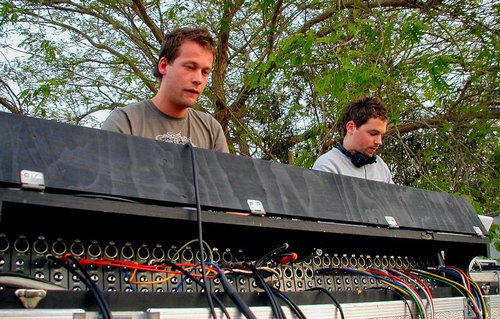
So... Son Kite is actually a trance project? Seb: For me itís trance, but many people say that now Son Kite is too much techno, itís not trance. Marcus: It depends. In Greece, if you come to one city, they say Son Kite is pure house, but if you say Son Kite to a progressive house DJ he would say itís trance. Itís so different, what people think in different regions. Youíve left the management of MPDQX. Why? Seb: MPDQX was our little baby. We started it together with Peter 4 years ago. MPDQX is all the labels, the management, the booking and the publishing. It was really interesting and a perfect way to get to know the music industry, because we participated in all the different parts of it. It had to do with everything: making music, mastering music, making graphics, booking artists, promoting artists, releasing records and dealing with distribution. But in the end, to have 5 different music projects, 3 labels, management, publishing and booking is just got too much. We worked non stop all the time, we started to be a little stressed or frustrated. We couldnít do anything good enough because we had too much to do. We came to a crossroad where we had to take a decision about what we want to focus on. Our decision was quite obvious: the music. We made it two years ago. Marcus: But we didnít tell anyone. Seb: Because we already had signed artists. You canít just cut the cable, you have to carry out your commitments to other people. So we did everything that we were obligated to do and in September last year we felt that itís that right time to make the announcement because weíve released everything that we should release and weíve done everything as we were supposed to do. We asked Peter if heíd like to continue by himself. He was quite sure that he wants to continue with MPDQX and digital structures. So now weíre only making music, weíre only artists and Peter has a label by himself. Israel is facing a difficult time. Did you have any worries coming here? Marcus: A little bit. Actually we got so many booking requests from Israel in the past 2 or 3 years. Weíve been here 3 times before, the situation got worse and we felt like... maybe we shouldnít go, because we watch the media in Sweden, and on the television they say itís horrible in Israel, it has problems, big problems, people are bombing and everything. So you think that itís a very very bad situation. But when you speak to Shahar, for instance heís saying ďNo problems. Itís like the same thing as alwaysĒ. We got convinced after a while. Everyone from Israel is saying that itís not too bad so we went anyway. Seb: The media is always trying show the scary stuff, because the scary stuff and bad things are what people want to watch. So maybe, you automatically make your own mind and think that ďoh shit, itís really dangerous down thereĒ. Itís hard to know whatís true and what isnít. Maybe itís true but they just show one side and not the other. Weíre not afraid but... Marcus: We think twice about going places. Seb : We try to stay here and not to go on buses all day long or something. 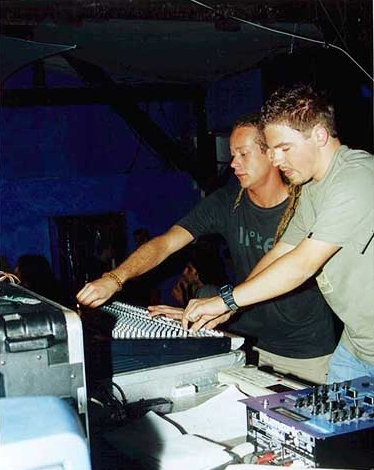
When did you perform here? Seb: The first time was at ZooBís party in the Tchelet club (in the picture). It was in a club area next to the Octopus and TLV. It was quite a small club. ZooB had a really progressive good club going at that time and it was a really good experience, because both of us were really afraid, not from the bombs but from the Israeli musical taste. ďEveryone only listens to full on music hereĒ, we thought. We expected tomatoes and apples on our heads when playing more progressive stuff, but we noticed directly that all the people in this club only wanted us to play progressive music, and the trance scene in Israel is not so much like the trance thatís released from Israel (which is mostly full on music), but here in Israel people listen to all kinds of electronic dance music. That was a really good experience. The second time we played at the Bereshit festival and the third time was in a Moksha party in the caves outside Jerusalem and also the Q club. 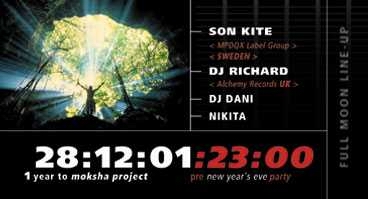
Do you think the scene has changed? Marcus: Itís so hard to say, because you make your own judgment according to the people you meet. The people we met this time speak a lot about the full on scene so the impression I got now is that the full on is even bigger now than before. What is progressive music? How would you define progressive electronic music? Seb: Progressive is a dangerous word for describing a style because progressive itself, as a word means development, something innovative, something new. I think itís quite bad to name a whole style as progressive because a style itself can be progressive when it arrives and itís new, but it canít always progressive (as a style) for a long period of time, because as soon it becomes a style it loses the thing to be progressive. It has to be new to be progressive but still everyone uses the word progressive as a style. We have to do it but I dislike it very much. Progressive for us is new, innovative people or artists who try to do something different, something new. What are the benefits of working together? Whatís the role of each one in the making of a track? 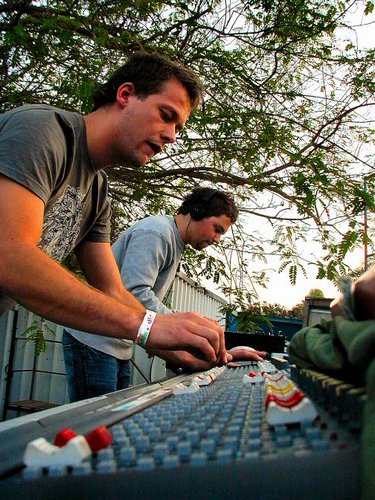
Marcus: There are lots of benefits and also bad parts, but mostly benefits. Seb: hmm... Let me hear the bad parts :). Marcus: The benefit is that sometimes when weíre in the studio, one person could be down and tired and the other person is really into it and really wants to make a track. Thus the positive person is helping the other one. Helping each other to develop or to get creative, thatís the main benefit. Of course it can be negative sometimes. For example, I can approve of a sound that Sebastian doesnít like. Seb: I donít think thatís a bad thing, I only think thatís a good thing. If you donít have the differences, the different tastes of music itís very... Marcus: Of course, but the situation is bad, because then you start to argue. Seb: Maybe itís not so much fun, but I think itís very good and also one of the typical benefits of being more than one. Itís much easier to develop because we both take our inputs from different styles of music, because we listen to different kinds of music. Thus our fusion is something completely new. You play a lot, especially now. Do you like to travel around the world? 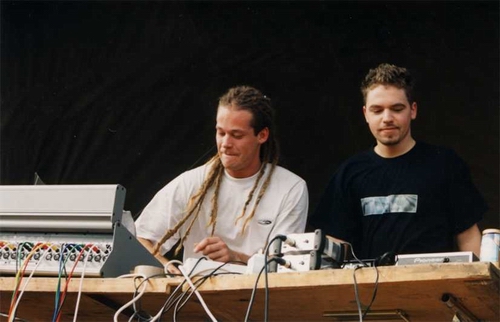
Seb: Itís wonderful to be able to show your music to the people, see that people enjoy your music and you can create happiness on the dance floor. Marcus: And you need it as well. Seb: Yeah, itís really important to get input about what youíre doing. Of course itís really nice to see the whole world all the time. One week youíre in Mexico, next week in Israel, then youíre going to Tokyo and so on. You get different atmospheres and feelings everywhere and get really spoiled with all those impressions. Itís a really varied work and thatís super-good. But to be able to do that, you have to sacrifice a lot of things, because when youĎre home you need to work in the studio, you canít be free all week and you play on the weekends. That means youíre mostly working all the time and you have very little time for friends, girlfriends, family, etc. and when they are free on the weekends when you are away so itís very easy that you lose your connection with the people that you love and like a lot. So thatís the bad thing. Sometimes it can also be boring at the airports :). Marcus: But most of the time itís fun, itís still fun. Actually whatís worse was in the beginning when we only started Seb: In the beginning it was really fun but after a while it got much worse. Marcus: In the beginning we didnít have a name and we had to struggle to find gigs. When you had a gig it was not well-paid and you didnít get a place to sleep, and you had to stay in the party from the beginning to the end, and you had to be awake for two days in a row without sleeping. Seb: Now we can have some demands and that makes it nice. Like a place for ourselves to be able to relax and do our thing. Do you have any bizarre stories from where you played? Seb: I think weíre quite humble and relaxed people. We donít take any drugs and we donít go to all the after-parties and go ďahhhhĒ, you know. I think the bizarre stories are mostly at the after-parties. One thing that was quite strange happened to us some time ago in Mexico when we had the Digiboga tour. We played outside Cancun in a nature reserve called Tres Rios. This was the first gig and then Marcus and I had two more gigs. Three gigs on 3 days, which means that ultimately you do not sleep in 3 days. When we were going to leave this nature reserve it was really hard, because there was no one who took care of the artists. We were about 10 artists, standing on the beach, with equipment, jungle everywhere. We were really stressed because we needed to go to the airport for the next gig. Then came one car with a big wagon on the back and the driver said: ďOK, everyone put the equipment in the wagon and jump in. So we were in the car and all the equipment was in the wagon. The driver was supposed to go out and drive us to the main road where we were supposed to have a cab to the airport. He was driving like crazy, absolutely too fast on these small roads, in the jungle. After a while the wagon got loose from the car and we were all like ďwhooooĒ. The wagon started to wander independently and the driver, who noticed something was wrong, just pressed brake. Since the road was going down, the wagon caught up with us and CRASH, straight to the back window. So, we were sitting in the jungle, on a road, with equipment everywhere, the wagon on the side and everyone was all like ďWhat the fuck are we doing now?Ē. And the most bizarre thing about it was that a short time afterwards, a friend of ours from Sweden came on a big bicycle, to where we were sitting, and said ďhelloĒ. That felt so bizarre. Like ďWhat the fuck is he doing here, in the jungle?Ē What was he doing in the jungle? Seb: He was in the party before but we hadnít seen him for a long time, and just sitting there, ďWhat shall we do? Weíre in the jungle? We canít go anywhereĒ, and then he comes on a bicycle on this little road. Marcus: Iím sure we have many bizarre stories, but I canít think of anything now. When you play too much you get used to it, you get spoiled. So if thereís something weird happening in a party youíre like, ďyeah ,okĒ. Seb: There are many beautiful things that you can tell, like wonderful gigs in beautiful places that you have visited and played for. For example... Seb: The bushes in Australia, outside Melbourne was really an amazing thing. About 5,000 to 10,000 people drove five hours to this place, in the middle of nothing. Outside Tokyo there are a lot of beautiful parties: out in the jungle and up at the mountains. The beaches in Mexico and the islands of Greece are really beautiful places. ďNormalĒ musicians who play Jazz, Pop or Classical go to all the normal concert places, but when you do electronic dance music, you get to visit all this strange nature places and show your music to people, live in the most beautiful places. Thatís a big, important thing that is still so nice. How was the gig at the Zamir club? Seb: it was good. I expected a little bit more people, but I think lot of people knew that weíre playing at the Moksha party, and maybe our old audience prefer the Moksha outdoor event in nature, compared to a club gig. But still I think the atmosphere was really good. I think people liked it a lot. 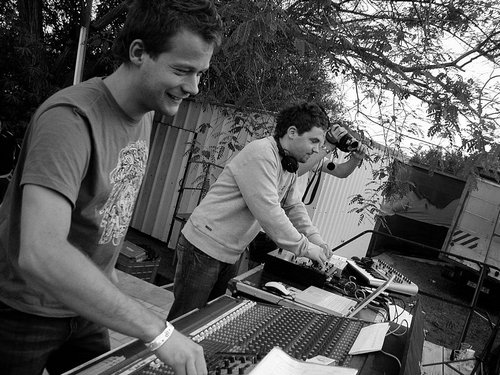
And how was Moksha? Seb: I think that the Moksha party was good but since we didn't get the equipment that we needed we couldn't really perform our best set. When you have to think about the technical problems it's very hard to get into the music, which is really important to be able to do a really good set. To what direction is the trance scene is Sweden going? Seb: We have many full on acts like Logic Bomb, Hux Flux etc. I donít know what they are doing, because we donít have so much contact with them, but I think theyíre going full on. We also have progressive acts like us, Atmos, Ticon and Vibrasphere. I think that especially those four groups are trying to do something new. Atmos really focuses on development, to do something different that he didnít do before. Ticon are doing that too. It may be more housey in the some peopleís opinion, but I think itís more of a progression, trying to do something new. Where is trance scene going? Do you recognize a change in the last few years? Marcus: Itís getting bigger and bigger. More and more parties and bigger and bigger parties, like here in Israel. Seb: Many people say that the full on is getting bigger and bigger again, because a few years ago, when the progressive arrived, it was new and fresh. People thought that ďoh, hereís something newĒ. I think progressive got really boring after a while, because there are not so many artists in the progressive scene who try to do something different. So it got boring as the full on (the kind that also doesnít develop). So maybe there are more artists in the full on scene who do something different now comparing to the progressive scene, and thatís why itís not so strange that people go to the full on scene. People need something new. We hope that more and more people in the progressive scene will try to make an effort to make something new, something different. Then the people will find this style interesting again. 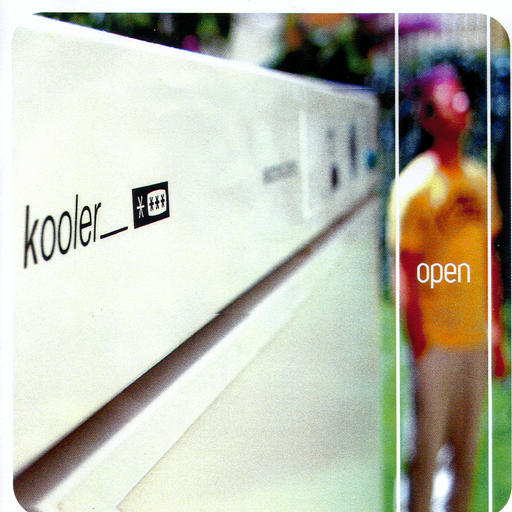
Sebastian, you have a project called Kooler and youíre about to release an album. Can you tell us a bit about the project itself? Seb: Itís more progressive house than Son Kite, but in my opinion itís still very trancey. From the beginning it was meant to be my solo project, but when we started to do the Son Kite album we were working so much, and I didnít get any time for making music, so two of the tracks in this album are actually made together with Marcus. It will be released on May on Kamaflage (which is a sub label of Dragonfly). I think people will recognize a lot of Son Kite in it but still, itís different. Marcus, you released a CD called Digital DJ on Digital Structures. What makes good DJing? 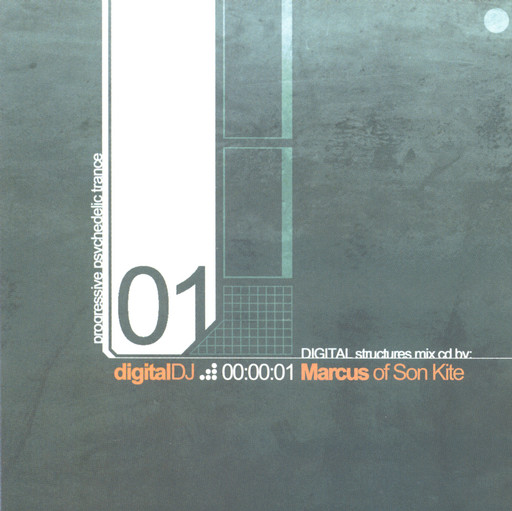
Marcus: A Good DJ should catch the audience and not only play for himself. Of course you play the style that you like, but you should also try to catch the audience. A good DJ shouldnít only mix good, but also mix styles. Of course, technically, good mixing is still very important, but for me, when Iím dancing, Iíd love to hear a DJ mix, for example, a progressive house track with a trance track. You get it together and it fits perfectly because you have more contrasts in dancing. You just get everything and that gets you into trance. That way you can really appreciate the different styles. If you compare it, for example, to a DJ who is playing only progressive house, the same style all the time, I think itís very boring because after two or three hours you get tired of it. And if the DJ after him is also playing the same style it gets very boring, because you really need the changes in the music. 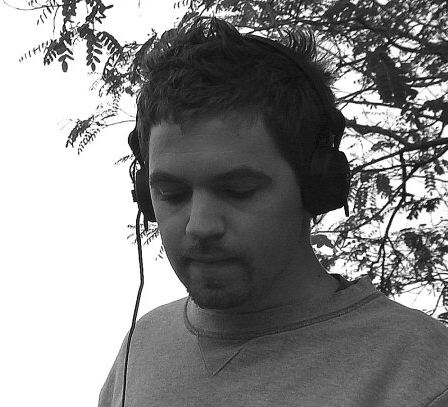
What did you try to do in your CD? Marcus: Itís so hard to do a mix CD, because you wanna show your skills, show what styles are you playing and try to do a buildup. Itís very important to catch the audience. That way they get into the music. Making a mix CD is very hard because you have only 80 minutes. On this CD I tried to demonstrate my skills and show the variety of the progressive music that I liked on that time. Actually itís one and a half year old or something right now. Iím very happy with it. How do you define good music? Seb: For me itís very easy. Itís something that gives me a feeling, or something that gives me emotions.. It can be everything from super well-produced, innovative, fresh, new music to something super simple, nothing new, just a banjo, some girl singing in the beach can give me a really nice feeling, emotions at that time. Itís really good music for me at that time. Something that grabs you, thatís good music. Marcus: Something that makes you creative or inspired. Seb: Or, you donít need to be creative, you just get a really good feeling that life is nice and then itís also good music. Marcus: That too, of course. You donít have to be super creative all the time. Seb: Yeah, sometimes itís nice not to be. Where are you going? What is the aim of the Son Kite project in the future? 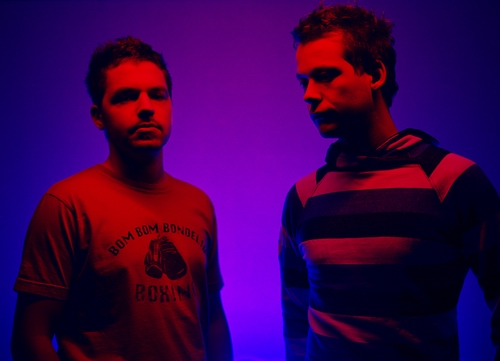
Seb: The answer to that is that there is no specific aim, and I think itís a good thing- to have the doors open and to be able to catch our own will, our own development. Marcus: We have been working so hard on the album and the concept for such a long time. Itís so nice that when we finished it we can let it go and just relax, do our gigs and donít think so much about it for a while. Then, we can start thinking again about what we are going to do next time, because Iím sure weíre not gonna do the same thing again. The next album will be something different. Seb: as Marcus says, just now, we have been focused so much, we have been working so much. Weíd like to do something else like a dub track, chillout, house, whatever. Just play the Son Kite gigs and see what we want. Marcus: Of course we wonít stop doing dance music and trance, progressive trance. Seb: on the next month. Marcus: Yeah, of course. On the next month :). Thanks to Ilia Zilberman for the wonderful pics from the Moksha party, April 2004 |
| Interview by TiMMY |

|

|

|
| Site Map |
| :::::::::::::::: | :::::::::::::::::::::::::::::: | Copyright 1997-2025 IsraTrance | :::::::::::::::: |